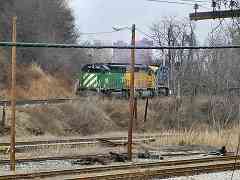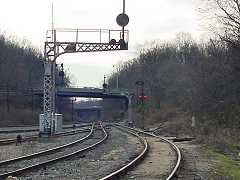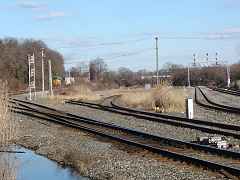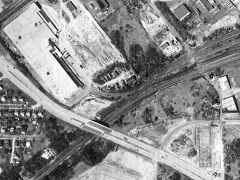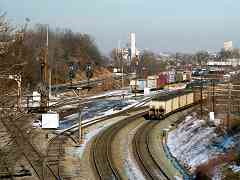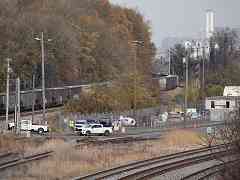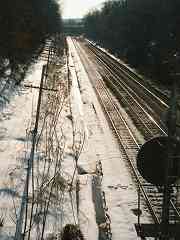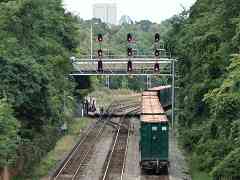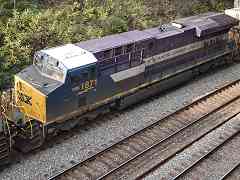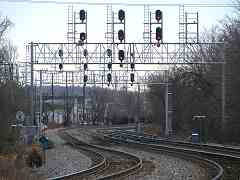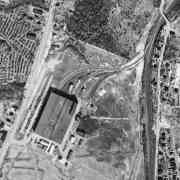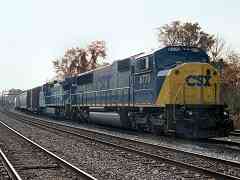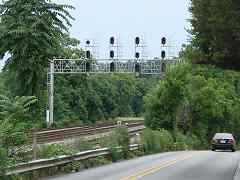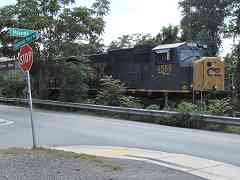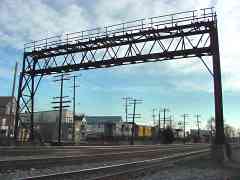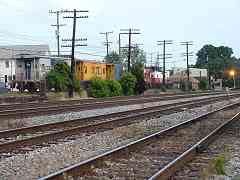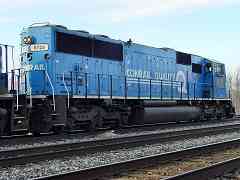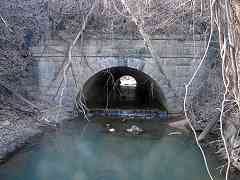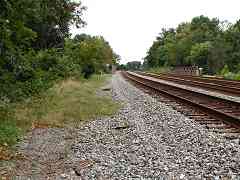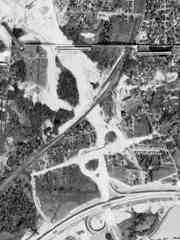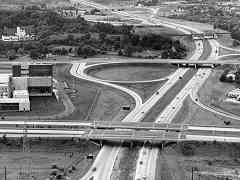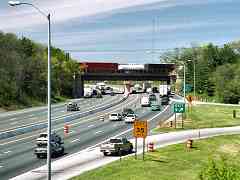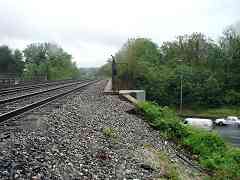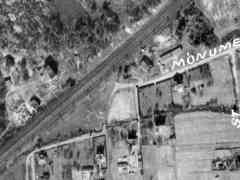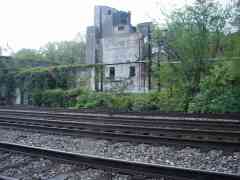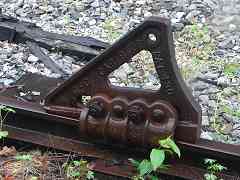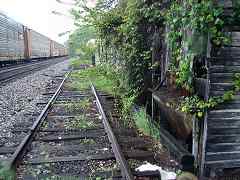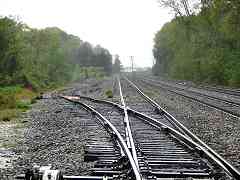|
With proximity to shipping by both rail and sea, this area a few miles
from Baltimore became a hub of liquor distilling in Maryland. The text
painted on the building read, "Monumental Distillers Inc. Pure Maryland
Rye Whiskey Bourbon-Corn".
Rye whiskey was the most popular form of whiskey in the northeast, and the
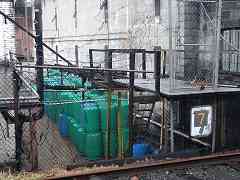 Maryland style, less spicy but brighter than its Pennsylvania cousin, was
a top seller. Monumental, Heilman and Calvert were just a few of the
distilleries in this vicinity. It was the home of the
Standard Compressed Yeast Company in 1915.
Maryland style, less spicy but brighter than its Pennsylvania cousin, was
a top seller. Monumental, Heilman and Calvert were just a few of the
distilleries in this vicinity. It was the home of the
Standard Compressed Yeast Company in 1915.
As seen at right, some distillery un/loading docks had rails of their own on
which wagons likely rolled.
In 1919, the 18th Amendment to the United States Consititution (Prohibition)
forever changed distilling in Maryland -- and put the smaller companies out
of business for good. Calvert was purchased by Seagram, with monetary help
from bootlegging, soon after Prohibition was repealed. Others, such as
Monumental, resumed operation, but like their ad here, gradually faded away
and were bought out or reorganized. Monumental continues now under the name
Majestic Distilling Company but ceased producing Maryland Rye in 1972.
As of 2022, Iron Bull Distillery operates here.
Link:
Iron Bull,
Majestic Distilling history
|
